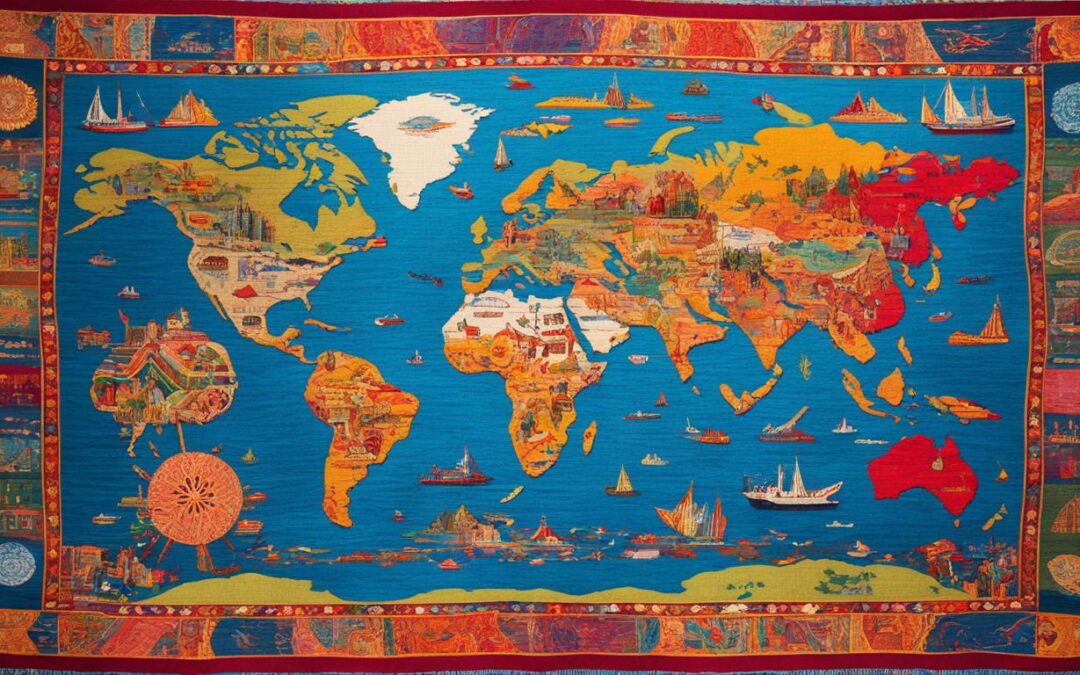Language plays a critical role in preserving cultural heritage. It is through language that values, traditions, and customs are passed down from one generation to another. When a language is lost, a part of the culture is also lost. Conversely, preserving a language ensures that the traditions and customs continue to be upheld and passed on. Language is not just about sentence structure and grammar; it is a reflection of a culture’s history, discourse, and heritage.
The Importance of Language in Indigenous Communities
For indigenous communities, the survival of their language is closely tied to the preservation of their way of life and the safeguarding of their history. Language allows them to express their spirituality and understanding of nature in a way that cannot be fully captured in English or other languages. It embodies their traditional concepts of environmental protection, care for the elderly, and living in harmony with nature. Preserving their language is essential for the maintenance of their cultural practices, cultural identity, and cultural values.
- Language allows indigenous communities to convey their spiritual beliefs, deep connection to nature, and traditional environmental protection practices.
- By preserving their language, indigenous communities can maintain their cultural practices and pass them down to future generations.
- Language is a fundamental aspect of cultural identity for indigenous communities, enabling them to express their unique values and worldview.
- Through language preservation, indigenous communities safeguard their history, stories, and traditional knowledge.
The Significance of Language in Cultural Practices
Language plays a crucial role in the cultural practices of indigenous communities. It allows them to communicate and transmit knowledge about rituals, ceremonies, and traditional customs. Language is deeply intertwined with dance, music, storytelling, and other artistic expressions that form an integral part of their cultural heritage.
- Language enables the passing on of traditional healing practices and medicinal knowledge within indigenous communities.
- By preserving their language, indigenous communities can uphold their unique culinary traditions and recipes.
- Language preservation ensures the continuation of indigenous craft-making techniques and traditional artistic forms.
In conclusion, language is not only a means of communication for indigenous communities but also a vital tool for preserving their cultural practices, cultural identity, and ancestral knowledge. By valuing and supporting language preservation efforts, we can contribute to the resilience and flourishing of indigenous cultures and communities.
The Jicarilla Apache Language Preservation Project
The Jicarilla Apache Nation in New Mexico understands the immense importance of preserving their language to safeguard their rich history and culture. In collaboration with Dr. Melissa Axelrod from the Department of Linguistics at the University of New Mexico, Dr. Veronica Tiller, a Jicarilla tribal member, has spearheaded the Jicarilla Apache Language Preservation Project.
The project aims to record and preserve the endangered Jicarilla Apache language by leveraging the knowledge and expertise of Jicarilla Nation elders and graduate students. One of the primary objectives is to update outdated translations and enhance texts collected from the late 19th and early 20th centuries with historical and cultural context.
By creating a user-friendly written system, the project envisions facilitating the future generations’ ability to read and write Apache. This initiative acknowledges that language preservation is not merely about linguistic aspects but also about ensuring the transmission of essential cultural contexts and traditions. The Jicarilla Apache Language Preservation Project stands as a vital endeavor in safeguarding the Jicarilla Apache Nation’s language, heritage, and cultural identity.
- The Jicarilla Apache Nation in New Mexico is committed to preserving their language for cultural continuity.
- Dr. Veronica Tiller and Dr. Melissa Axelrod lead the Language Preservation Project.
- Elders and graduate students collaborate to update translations and incorporate historical and cultural context.
- The project focuses on creating a user-friendly written system for future generations.
- This initiative ensures the preservation of the Jicarilla Apache Nation’s language, heritage, and cultural identity.
The Role of Language in the Preservation of Native American Cultures
Native American languages are facing a critical threat of extinction, with an alarming estimated 90% of languages worldwide at risk by 2050. This imminent loss poses a significant challenge not only to linguistic diversity but also to the preservation of unique cultural traditions, knowledge, and ancestral memories embedded within these languages.
To safeguard Native American cultures, efforts are being made to document and revitalize endangered languages. One of the most effective ways to achieve this is by actively continuing to use these languages in both written and spoken forms. Language serves as the key to raising awareness and understanding of the rich heritage embedded within Native American cultures, promoting cultural appreciation and preservation.

By encouraging the use and preservation of Native American languages, communities can ensure the transmission of cultural traditions from one generation to another. The stories, rituals, and knowledge that are intricately woven within these languages become accessible, fostering a sense of connection to one’s roots and cultural identity.
Language revitalization initiatives aim to document and digitize existing resources, including texts, oral histories, and recordings, to preserve the linguistic and cultural wealth of Native American communities. These efforts go beyond linguistics, incorporating cultural context and traditional practices to ensure the accurate representation and understanding of the languages’ nuances.
Through these revitalization efforts, precious insights into the cultural practices, spiritual beliefs, and unique ways of life of Native American communities are preserved. The knowledge embedded within these languages offers invaluable contributions to fields such as anthropology, history, and environmental studies.
In conclusion, the preservation of Native American languages plays an indispensable role in safeguarding cultural traditions, knowledge, and endangered languages. By actively supporting language revitalization initiatives, we can ensure the continuity and celebration of the rich cultural diversity that Native American communities offer.
The Significance of Mother Tongue in Cultural Preservation
The mother tongue, or native language, plays a vital role in the preservation of cultural identity and intangible heritage. It is the language that individuals learn from birth and that embodies their home and dominant language.
The mother tongue is closely tied to a person’s cultural background, enabling them to understand and fully experience a community’s cultural aspects and nuances. It serves as a foundation for cultural traditions, values, and beliefs, allowing individuals to connect with their roots and maintain a sense of belonging.
By preserving and using their mother tongue, individuals contribute to the continued transmission of cultural heritage from one generation to the next. Through language, stories, myths, and rituals are passed down, preserving intangible traditions that define a community’s identity.
Furthermore, the mother tongue plays a crucial role in fostering a sense of pride and belonging. When individuals can express themselves effortlessly in their native language, they can fully communicate their thoughts, emotions, and ideas. This linguistic fluency enables a deeper understanding and appreciation of their cultural heritage.
Unfortunately, the influence of globalization and modernization poses significant challenges to the preservation of mother tongues. The dominance of widely spoken languages and the increasing migration patterns lead to language shifts and, in some cases, language loss.
Efforts to preserve and revitalize mother tongues involve documenting oral traditions, creating educational programs, and raising awareness about the importance of linguistic diversity. By actively supporting and valuing mother tongues, communities can ensure the preservation of their rich cultural identity and intangible heritage for future generations to cherish.
The Connection Between Language and National Identity
Language plays a vital role in shaping a nation’s identity and preserving its cultural heritage. It serves as a powerful reflection of a country’s traditions, customs, and history. The national language not only unifies the people within a nation but also distinguishes it from others, highlighting its unique cultural aspects.
Fluent knowledge of the national language enables individuals to foster a deeper connection with their community and fully engage with its cultural nuances. It allows them to understand and appreciate the values, beliefs, and traditions that form the foundation of their national identity.
- Language serves as an indicator of national pride, symbolizing the shared values and customs that bind a country together.
- It helps to preserve a country’s cultural heritage by carrying forward the linguistic traditions inherited from previous generations.
- Through the preservation and use of the national language, countries can maintain their distinct cultural identity and ensure its continuation for future generations.
The Significance of Unique Traditions
One of the remarkable aspects of a nation’s cultural heritage lies in its unique traditions. These traditions are often deeply intertwined with the national language. Whether it’s folk songs, dances, or rituals, language serves as the medium through which these traditions are expressed and passed down from one generation to another.
By preserving the national language, countries can protect and preserve their unique traditions, ensuring they remain vibrant and relevant. This preservation helps to foster a sense of pride and ownership among the citizens, as they recognize their cultural heritage as a valuable asset that sets their nation apart.
As a resource for preserving cultural heritage, language is an invaluable part of a nation’s identity. The connection between language and national identity serves as a reminder of the rich tapestry of cultures that make up our diverse world.
The Challenges of Language Preservation in a Globalized World
In today’s globalized world, the preservation of languages faces numerous challenges. Globalization, modernization, and cultural blending pose a significant threat to the survival of endangered languages. According to UNESCO, one language disappears every two weeks, underlining the urgent need to protect and preserve linguistic diversity.
Language preservation demands active efforts to continue using endangered languages, raise awareness about their importance, and integrate them into formal educational systems. By promoting the use of endangered languages in everyday life and providing opportunities for their learning, we can contribute to their revitalization and safeguard the cultural diversity they represent.
Documenting endangered languages and gathering linguistic resources is crucial for their preservation. Through this process, linguists and communities strive to capture and document the unique characteristics, grammar, and vocabulary of endangered languages. These efforts not only preserve linguistic diversity but also ensure that future generations have access to their cultural heritage and can appreciate the richness of their ancestors’ traditions.
Language preservation is a collective responsibility that requires collaboration between communities, linguists, educators, and policymakers. By acknowledging the value of endangered languages and their contribution to our global cultural heritage, we can work together to ensure their survival and pass on their unique traditions to future generations.

